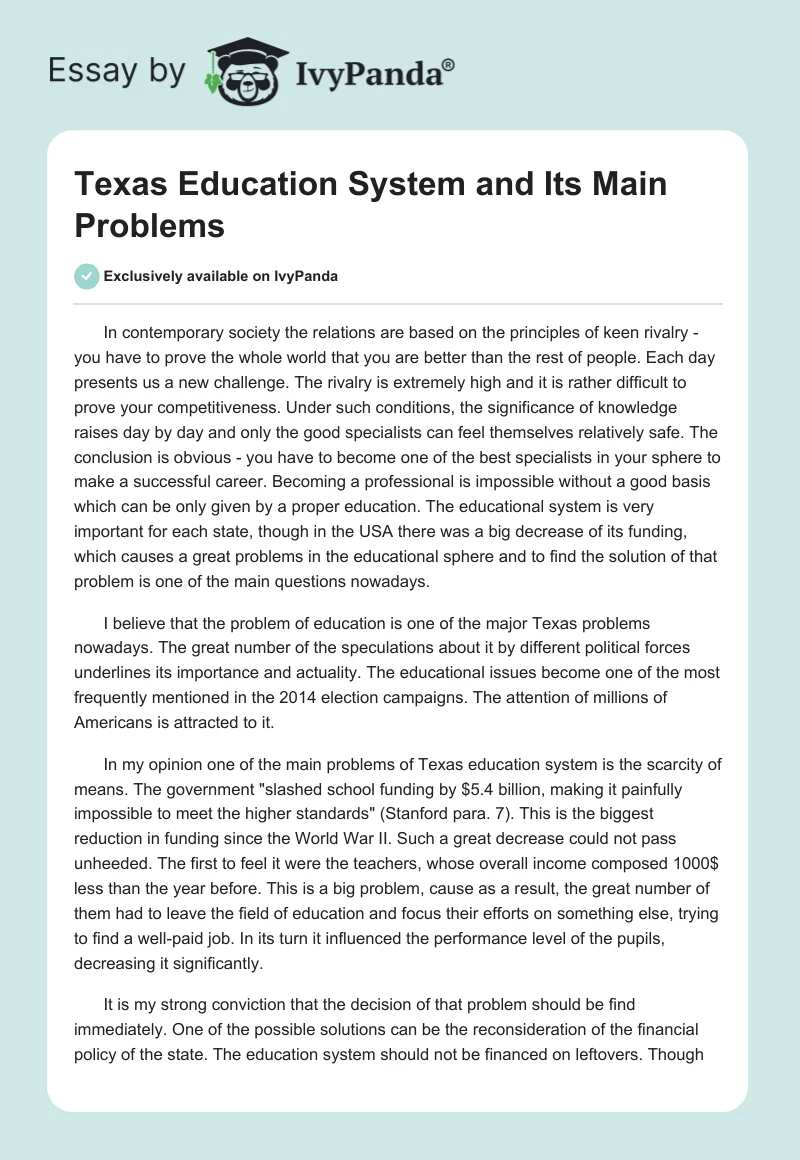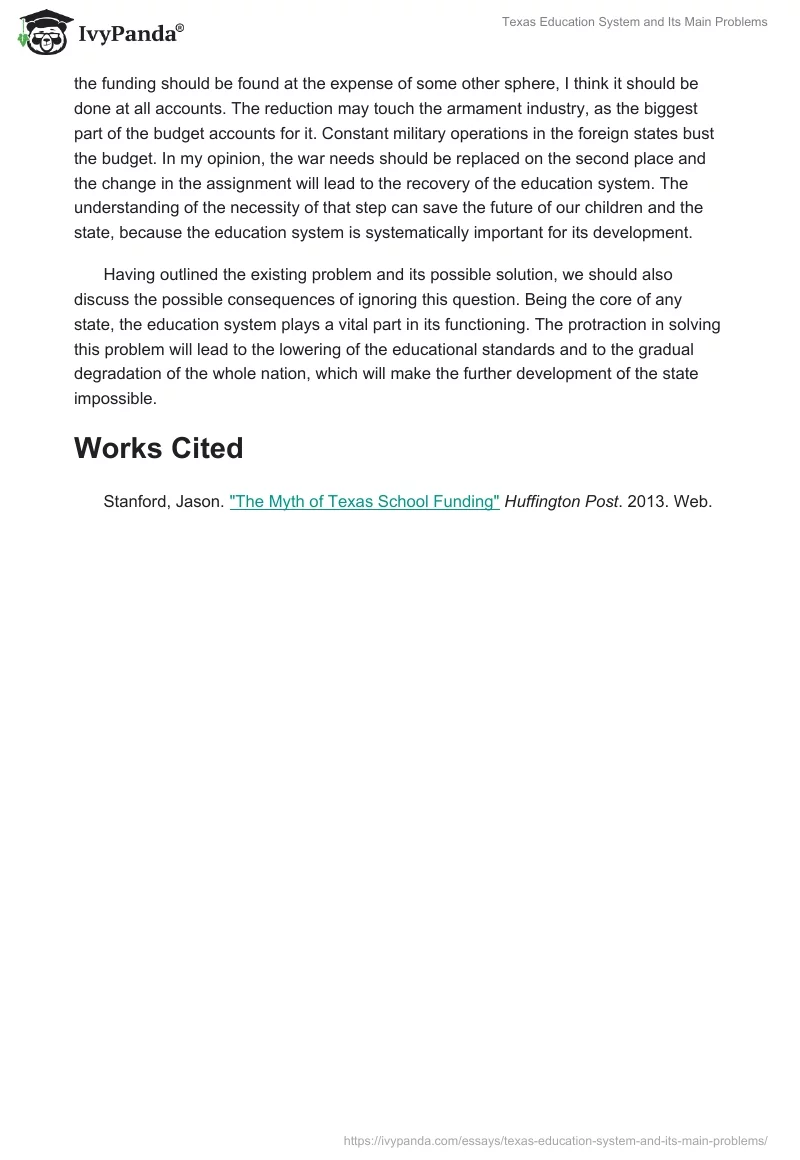In contemporary society the relations are based on the principles of keen rivalry – you have to prove the whole world that you are better than the rest of people. Each day presents us a new challenge. The rivalry is extremely high and it is rather difficult to prove your competitiveness. Under such conditions, the significance of knowledge raises day by day and only the good specialists can feel themselves relatively safe. The conclusion is obvious – you have to become one of the best specialists in your sphere to make a successful career. Becoming a professional is impossible without a good basis which can be only given by a proper education. The educational system is very important for each state, though in the USA there was a big decrease of its funding, which causes a great problems in the educational sphere and to find the solution of that problem is one of the main questions nowadays.
I believe that the problem of education is one of the major Texas problems nowadays. The great number of the speculations about it by different political forces underlines its importance and actuality. The educational issues become one of the most frequently mentioned in the 2014 election campaigns. The attention of millions of Americans is attracted to it.
In my opinion one of the main problems of Texas education system is the scarcity of means. The government “slashed school funding by $5.4 billion, making it painfully impossible to meet the higher standards” (Stanford para. 7). This is the biggest reduction in funding since the World War II. Such a great decrease could not pass unheeded. The first to feel it were the teachers, whose overall income composed 1000$ less than the year before. This is a big problem, cause as a result, the great number of them had to leave the field of education and focus their efforts on something else, trying to find a well-paid job. In its turn it influenced the performance level of the pupils, decreasing it significantly.
It is my strong conviction that the decision of that problem should be find immediately. One of the possible solutions can be the reconsideration of the financial policy of the state. The education system should not be financed on leftovers. Though the funding should be found at the expense of some other sphere, I think it should be done at all accounts. The reduction may touch the armament industry, as the biggest part of the budget accounts for it. Constant military operations in the foreign states bust the budget. In my opinion, the war needs should be replaced on the second place and the change in the assignment will lead to the recovery of the education system. The understanding of the necessity of that step can save the future of our children and the state, because the education system is systematically important for its development.
Having outlined the existing problem and its possible solution, we should also discuss the possible consequences of ignoring this question. Being the core of any state, the education system plays a vital part in its functioning. The protraction in solving this problem will lead to the lowering of the educational standards and to the gradual degradation of the whole nation, which will make the further development of the state impossible.
Works Cited
Stanford, Jason. “The Myth of Texas School Funding”Huffington Post. 2013. Web.


